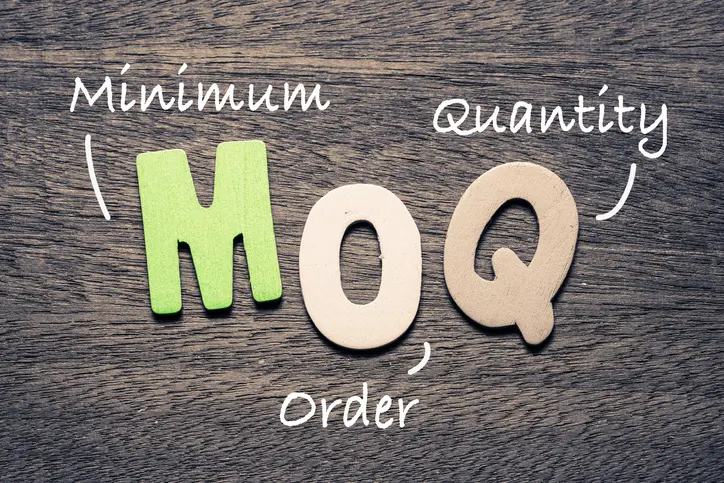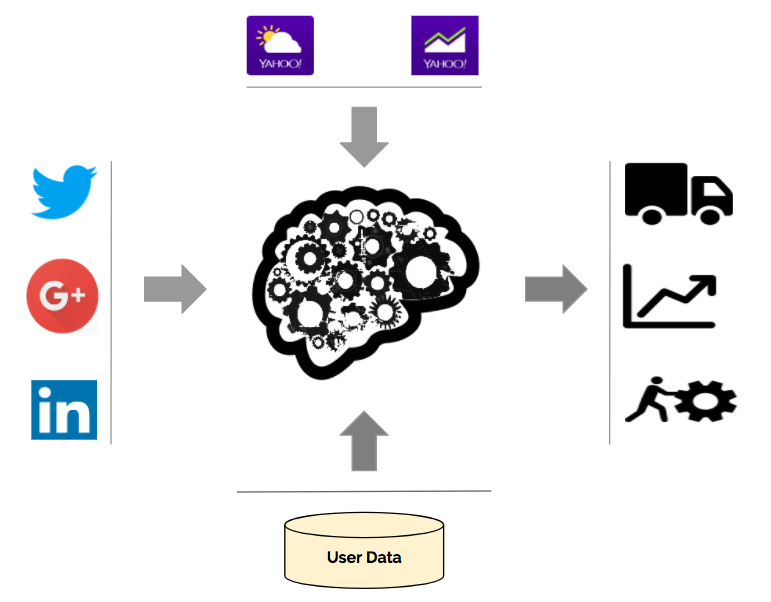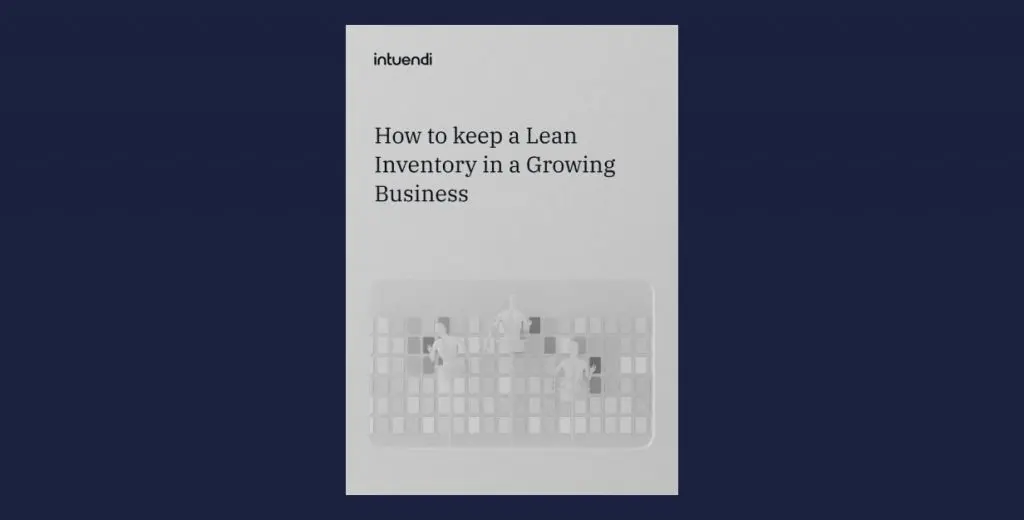Inventory management is absolutely crucial to the supply chain of any business, yet it also involves many challenges. If your inventory is not well managed it can affect many areas of the business, from customer satisfaction to profitability. Production disruptions and demand uncertainty are just some of the challenges a business faces, so to best deal with these issues, effective inventory strategies are needed to help balance the trade-off between service levels and inventory costs. Decoupling inventory is one of these effective strategies. Its purpose is to separate the dependent stages of a supply chain. If the stages of a business are production, distribution, and sales, then decoupling inventory would allow all these stages to operate independently of each other. This would allow each stage to work at its own optimal level without any delays or inconsistencies in the other stages affecting it. This would improve responsiveness and efficiency while reducing the risk of stockouts or excess inventory.
What is Decoupling Inventory?
Inventory that is held between stages of a supply chain is called decoupling inventory. In any supply chain, there is an upstream stage that sends a steady stream of products through to the downstream stage. This flow is aided by decoupling inventory because it acts as a buffer between the stages by absorbing any uncertainty or variability. In a three-stage supply chain consisting of raw materials, manufacturers, and retailers, each stage relies completely on the stage before it. The retailer relies on the manufacturer to deliver finished products, while the manufacturer relies on the supplier to deliver the raw materials they need to make the product. A delay in any of the three stages would mean that not enough inventory will be produced to meet demand. To avoid this, the manufacturer could hold back some finished products as well as raw materials. This is called Decoupling Inventory. In doing so, the manufacturer would still be able to continue to produce and deliver products, despite any delays in the stages before or after it.
There are 3 common types of inventory used in supply chain management. Other than Decoupling Inventory, there is Cycle Inventory and Safety Stock. Cycle Inventory refers to the inventory that meets the average demand within a replenishment cycle. This is determined by the order quantity or the lot size. Safety Stock is the extra inventory that is kept to act as a buffer during times of demand or supply fluctuations and is determined by service levels or fill rates. Decoupling Inventory refers to the inventory that is being kept to separate the dependent stages within a supply chain. This is determined by the lead time or throughput time of each stage.
How Decoupling Inventory Works
Let’s take a look at a simple supply chain consisting of just two stages, manufacturer and retailer. This particular manufacturer has a constant lead time of 10 days to produce a product, while the retailer sells the product with a variable demand that follows a normal distribution with a mean of 100 units per day, and a standard deviation of 20 units per day. The retailer orders the product from the manufacturer every 30 days, and the manufacturer delivers the product to the retailer every 10 days. The retailer wants to achieve a service level of 95%, which means that the probability of having enough inventory to meet the demand is 95%.
Without Decoupling Inventory, the retailer would have to order the product based on the forecast demand for the next 40 days (30 days of replenishment cycle plus 10 days of lead time), which is 4000 units (100 units per day x 40 days). However, this order quantity would expose the retailer to the risk of overstocking or understocking, depending on the actual demand. The retailer would run out of stock before their next delivery should the forecasted demand be lower than the actual demand. This would result in lost sales and customers. However, should the reverse happen, with the actual demand being lower than the forecasted demand, the retailer would end up with excess inventory resulting in unnecessary holding costs and the risk of obsolescence.
With Decoupling Inventory, the retailer would hold some extra inventory of the product to provide a buffer between it and the manufacturer. This inventory would allow the retailer to order the product based on the actual demand for the next 10 days (the lead time of the manufacturer), which is 1000 units (100 units per day x 10 days) on average. This order quantity would reduce any uncertainty and variability of the demand, as well as the risk of understocking or overstocking. This extra inventory could be used by the retailer to meet demand, should the actual demand end up being higher than the average demand. The retailer could then just replenish this inventory with their next delivery. Should the actual demand end up being lower than the average demand, the retailer would save some costs by having less inventory to hold.
The optimal level of Decoupling Inventory for the retailer can be calculated using the formula:
Decoupling Inventory = Average Demand x Lead Time + Safety Stock
Where Average Demand is the mean of the demand distribution, Lead Time is the time between placing and receiving an order, and Safety Stock is the inventory that is held to achieve a desired service level. In this example, the optimal level of Decoupling Inventory for the retailer is:
Decoupling Inventory = 100 x 10 + 32.9 = 1032.9
Where 32.9 is the Safety Stock that is required to achieve a 95% service level, based on the standard deviation of the demand distribution (20) and the z-score for the service level (1.645).
Differences between Decoupling Inventory and Safety Stock
Now that have created a firm understanding of what decoupling inventory is, it is important not to confuse this concept with that of safety stock. While they are similar in that they are both forms of inventory utilized to cope with supply chain uncertainties and variability, they are both distinct entities. There are three aspects that can be used to differentiate them: purpose, function, and calculation. In terms of purpose, decoupling inventory aims to improve the efficiency of the supply chain by separating any dependent stages into ones that operate independently. This is vastly different from the purpose of safety stock, which aims to ensure a high level of service by holding inventory that can mitigate unexpected demand or supply fluctuations.
Decoupling inventory functions in the upstream stage of the business by reducing the variability of the supply chain. This reduction in uncertainty upstream allows for a harmonious and stable flow of products to the downstream stage of the business. On the other hand, safety stock functions only in the downstream stages of the business. It prevents stockouts and shortages of products by bridging the gap between the forecasted and actual demand or supply. These differences become even more apparent when they are being calculated. Decoupling inventory is calculated by considering the lead time or throughput time of each upstream stage, together with the average demand at the downstream stage. In contrast, safety stock is calculated by using the standard deviation in the demand or supply and the service level/fill rate of the downstream stage. While safety stock and decoupling inventory are distinct, pipeline inventory is another related form of inventory that must be discussed.
Decoupling Inventory vs. Pipeline Inventory

Pipeline inventory, also known as Transportation Inventory, is a term used to refer to any inventory that is in transit between the various supply chain stages. It includes all products that are in the process of being shipped or delivered from one stage to another. It is different from decoupling inventory, which is any inventory in storage or at rest between the stages of the supply chain. They are therefore fundamentally different, as decoupling inventory disconnects the stages while pipeline inventory connects them. The formula used to calculate the cost of pipeline inventory is also distinct. It looks at the average amount of inventory in transit (Average Inventory), the annual percentage of inventory value lost to holding costs (Holding Cost Rate), and the time between when an order is placed and received (Lead Time). The formula is as follows:
Pipeline Inventory Costs = Average Inventory x Holding Cost Rate x Lead Time
Advantages of Decoupling Inventory
Decoupling Inventory offers many advantages to the supply chain, such as:
- Improving the responsiveness and flexibility of the supply chain, by enabling each stage to adapt to the changes in demand or supply, without affecting the other stages.
- Enhancing the operational efficiency and productivity of the supply chain, by allowing each stage to operate at its own optimal pace and capacity, without being constrained or influenced by the other stages.
- Reducing the inventory costs and risks of the supply chain, by minimizing the variability and uncertainty of the demand or supply, and hence the need for excess inventory or safety stock.
- Decreasing the bullwhip effect and the demand distortion of the supply chain, by improving the coordination and information sharing among the stages, and reducing the order amplification or variation.
How Decoupling Inventory Benefits Businesses
There are so many benefits a business will experience when adding Decoupling Inventory to their inventory management. When meeting and exceeding customer expectations and needs, a business gains the loyalty of its customers. Lower inventory costs and increased sales boost profitability. It can enhance the innovative capabilities of a business by highlighting any shortcomings in the supply chain, which can then be overcome by creative thinking. By reducing the impact disruptions have on a business, it improves its sustainability. Together, these make a business much more competitive, giving them an edge in today’s tough markets.
Practical Example of Decoupling Inventory
Let us navigate a working example of a business that has applied and benefited from using Decoupling Inventory successfully in its supply chain. The business manufactures air fryers, and the three main stages in its supply chain are design, assembly, and distribution. With air fryers being the latest “it” gadget to have in your kitchen, to say the market is fierce would be an understatement. This means that the design stage is of utmost importance, as any new or improved feature added will give the business a competitive edge, attracting new customers. The implementation of Decoupling Inventory will allow the design stage to operate independently and at its own pace. The design stage will be able to focus solely on innovation, without being affected by demand or supply fluctuations. The assembly stage will be able to operate independently at optimal capacity, without being affected by delays in the other stages. This will ensure its efficiency in the production and delivery of high-quality products. The distribution stage will not be affected by any inventory issues the other stages might have and will be able to focus on meeting and exceeding demand and customer expectations, thereby ensuring customer loyalty and satisfaction.
By using Decoupling Inventory, the business is able to improve its performance in every individual stage, despite them being linked in the same supply chain. This makes it more competitive in the market and helps it achieve its strategic and financial goals.
Conclusion
Decoupling Inventory is a type of inventory that allows the stages in a supply chain to operate independently of each other, making them more efficient. It improves the flexibility and responsiveness of the supply chain while reducing inventory costs, risks, and the bullwhip effect. Businesses can vastly benefit from this effective inventory strategy, as it holds ample weight in its impact on a business’s potential success.
Learn more about how technology can help you with your supply chain management in our blog article:







